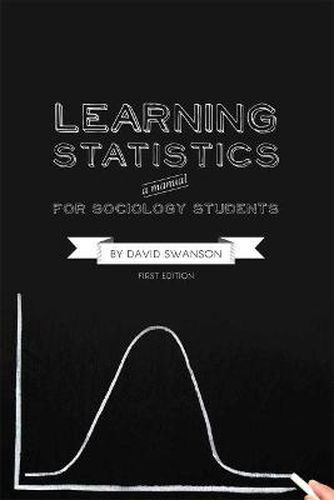Readings Newsletter
Become a Readings Member to make your shopping experience even easier.
Sign in or sign up for free!
You’re not far away from qualifying for FREE standard shipping within Australia
You’ve qualified for FREE standard shipping within Australia
The cart is loading…






This title is printed to order. This book may have been self-published. If so, we cannot guarantee the quality of the content. In the main most books will have gone through the editing process however some may not. We therefore suggest that you be aware of this before ordering this book. If in doubt check either the author or publisher’s details as we are unable to accept any returns unless they are faulty. Please contact us if you have any questions.
Learning Statistics: A Manual for Sociology Students helps students learn and retain important statistical concepts. New graduates face numerous challenges when applying statistics in the workplace. This text presents a unique and class-tested set of pedagogical tools that increase learning and retention, and prepare students for real-world application.
In the real world decisions are often made in conditions of uncertainty. Decision makers examine data generated through scientific sampling, which is a cost-effective means of generating information. This book addresses the selection, use, and interpretation of statistical tools, in conjunction with the presentation of effective results aimed at supporting practical decision-making. In essence, the book is based on the idea that you learn statistics by doing statistics.
The approach of Learning Statistics is three-fold. It is computer-based. It assumes that problems are client-driven and create conditions of uncertainty. It is designed with a conceptual umbrella over empirical assignments. Students will achieve key learning outcomes including:
Grasping the conceptual foundation that underlies inferential statistics; Understanding basic descriptive and inferential tools within a decision-making framework;
Selecting appropriate statistical tools, such as graphing, correlation, and simple regression, for specific tasks; Using software packages to support data analysis.
This comprehensive text addresses major concepts in classical statistics. It serves as a bridge between the classroom and the office.
$9.00 standard shipping within Australia
FREE standard shipping within Australia for orders over $100.00
Express & International shipping calculated at checkout
This title is printed to order. This book may have been self-published. If so, we cannot guarantee the quality of the content. In the main most books will have gone through the editing process however some may not. We therefore suggest that you be aware of this before ordering this book. If in doubt check either the author or publisher’s details as we are unable to accept any returns unless they are faulty. Please contact us if you have any questions.
Learning Statistics: A Manual for Sociology Students helps students learn and retain important statistical concepts. New graduates face numerous challenges when applying statistics in the workplace. This text presents a unique and class-tested set of pedagogical tools that increase learning and retention, and prepare students for real-world application.
In the real world decisions are often made in conditions of uncertainty. Decision makers examine data generated through scientific sampling, which is a cost-effective means of generating information. This book addresses the selection, use, and interpretation of statistical tools, in conjunction with the presentation of effective results aimed at supporting practical decision-making. In essence, the book is based on the idea that you learn statistics by doing statistics.
The approach of Learning Statistics is three-fold. It is computer-based. It assumes that problems are client-driven and create conditions of uncertainty. It is designed with a conceptual umbrella over empirical assignments. Students will achieve key learning outcomes including:
Grasping the conceptual foundation that underlies inferential statistics; Understanding basic descriptive and inferential tools within a decision-making framework;
Selecting appropriate statistical tools, such as graphing, correlation, and simple regression, for specific tasks; Using software packages to support data analysis.
This comprehensive text addresses major concepts in classical statistics. It serves as a bridge between the classroom and the office.